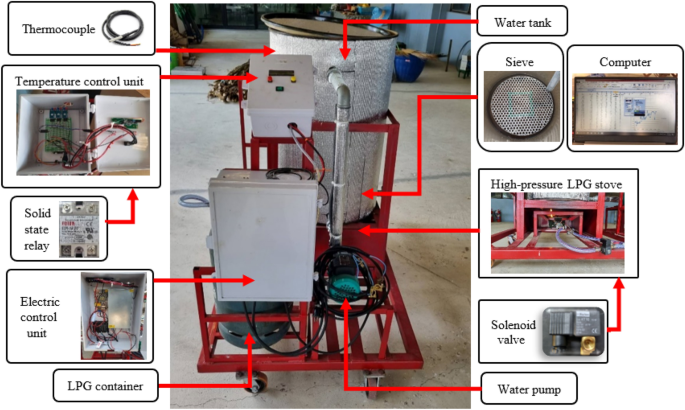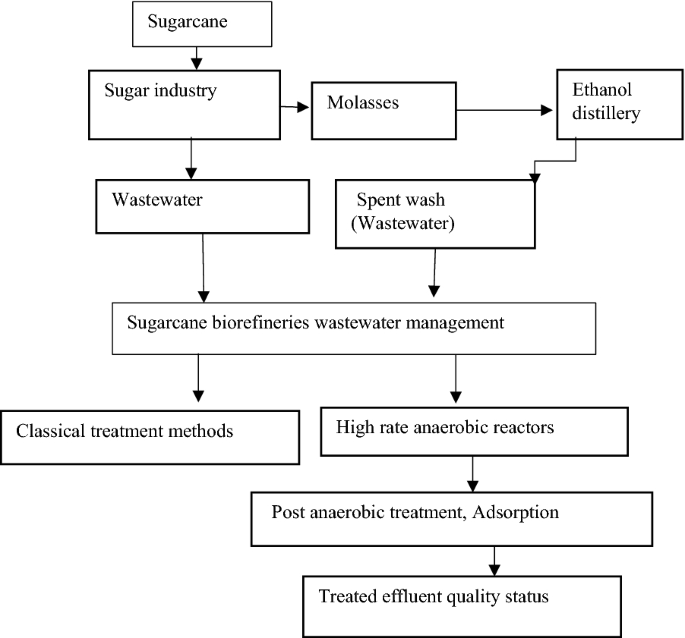Exploring Composting Options for Products From Sugarcane
Exploring Composting Options for Products From Sugarcane
Blog Article
Unlocking the Prospective of Products From Sugarcane: a Comprehensive Guide
The possibility of sugarcane extends much beyond its standard usage for sugar manufacturing. This guide explores the diverse applications of sugarcane, from energy and eco-friendly materials to wellness products. By examining its trip from area to manufacturing facility, it discloses how lasting practices can transform waste right into useful sources. As markets seek environment-friendly services, the question stays: just how can these developments improve our approach to farming and production?

The Journey of Sugarcane: From Area to Factory
Sugarcane undergoes a remarkable change as it takes a trip from lavish areas to dynamic manufacturing facilities. In the fields, the tall, environment-friendly stalks are collected, usually by mechanical means or manual labor. When cut, the sugarcane is quickly moved to refining facilities to guarantee maximum quality. At the factory, the primary step involves squashing the cane to extract the sweet juice, which contains sucrose. Products From Sugarcane. This juice is then filteringed system and clarified, removing pollutants. Following this, it goes through evaporation to focus the sugar web content, leading to condensation. The resulting sugar crystals are divided from the staying molasses with centrifugation. Lastly, the sugar is dried and packaged for distribution. Throughout this journey, keeping top quality and effectiveness is vital, as the methods used directly impact the item's final high quality. This change not just highlights the farming importance of sugarcane but additionally its substantial role in the international economic climate
Sugar and Its By-products: Greater Than Just Sweetness
The improvement of sugarcane into refined sugar unlocks to a large variety of items and applications that extend beyond simple sweetness. Sugar and its by-products, such as molasses, brownish sugar, and glucose, play important roles in various industries, including food, drugs, and cosmetics. In the food sector, these ingredients enhance flavors, boost appearance, and function as preservatives.Molasses, a byproduct of sugar manufacturing, is abundant in minerals and vitamins, making it an important component in natural food and animal feed. Glucose, an easy sugar stemmed from sugarcane, functions as a significant power source in sporting activities nourishment and is essential in the production of confectionery. In addition, sugar derivatives are made use of in fermentation processes, adding to the manufacture of alcohols and other microbial items. On the whole, the convenience of sugar and its by-products highlights their importance past simple sweetness in daily life.
Biofuels: Harnessing Energy From Sugarcane

A considerable part of international biofuel production now counts on sugarcane, identified for its high energy return and efficiency in converting sunlight into biomass. This tropical plant functions as a primary resource for ethanol, an eco-friendly fuel that can change gas in lorries. Sugarcane's capability to create more ethanol per hectare than various other feedstocks, such as corn, adds to its raising popularity among biofuel producers.The fermentation process of sugarcane juice or molasses produces ethanol, which can be combined with nonrenewable fuel sources to minimize greenhouse gas emissions. In addition, by making use of the recurring bagasse from sugarcane processing, energy can be generated via burning, more improving the sustainability of biofuel production. As nations seek to mitigate environment adjustment influences, sugarcane biofuels use an appealing option, reinforcing power safety and promoting agricultural sustainability while sustaining country economies.
Eco-friendly Plastics: The Sustainable Alternative
How can sectors shift to even more lasting techniques when faced with expanding plastic contamination? One appealing service hinges on eco-friendly plastics stemmed from sugarcane. Unlike conventional petroleum-based plastics, these bioplastics use an environment-friendly choice that can considerably decrease environmental influence. Made from renewable resources, sugarcane-based plastics decay extra swiftly in numerous conditions, lessening land fill build-up and aquatic debris.The manufacturing of naturally degradable plastics not only addresses waste monitoring challenges but additionally lines up with the enhancing consumer demand for sustainable items. Industries taking on these products can enhance their brand image while adding to a circular economic climate. Furthermore, the change to naturally degradable options motivates advancement and investment in new modern technologies, fostering a greener sector landscape.As a lot more business acknowledge the benefits of sugarcane-derived plastics, the potential for widespread fostering rises, leading the method for a much more sustainable future in packaging and item style.
Animal Feed and Fertilizers: Using By-products
The results of sugarcane processing hold visit considerable capacity for both animal nourishment and organic fertilizers. These by-products can be included into animal feed, offering important nutrients while decreasing waste. Additionally, they can work as effective natural fertilizer alternatives, enriching dirt health and wellness and advertising sustainable agricultural techniques.
By-products in Animal Nourishment
While sugarcane is largely valued for its sucrose content, its byproducts play an important duty in pet nutrition, especially in the kind of animal feed and fertilizers. The coarse residue referred to as bagasse, produced throughout the extraction of juice, works as a valuable resource of roughage for animals. This high-fiber product improves food digestion and promotes total health in ruminants. In addition, molasses, a byproduct of sugar refining, is rich in energy and can be utilized to supplement animal diet regimens, improving palatability and dietary worth. Vinasse, a fluid byproduct from ethanol production, has important nutrients and can be made use of as a feed additive. Overall, sugarcane by-products contribute greatly to lasting pet nourishment practices.
Organic Fertilizer Options
Using sugarcane by-products extends past pet nutrition to include organic fertilizer options that benefit agricultural methods. The coarse residues, such as bagasse and filter cake, work as effective organic fertilizers, improving dirt health and boosting crop yields. These materials are rich in nutrients, consisting of nitrogen, phosphorus, and potassium, essential for plant development. When decayed, they improve soil framework, water retention, and microbial activity, cultivating a sustainable farming ecosystem. In addition, using sugarcane byproducts for fertilization reduces dependence on synthetic plant foods, advertising eco-friendly agricultural methods. By reusing these results, farmers can add to a round economic climate while enhancing their efficiency and reducing waste. This method exemplifies cutting-edge techniques in lasting farming, leveraging sugarcane's complete capacity.
Health and Wellness: Nutritional Perks of Sugarcane
Many research studies highlight the dietary benefits of sugarcane, making it an important addition to a well balanced diet regimen. Rich in vital nutrients, sugarcane consists of substantial quantities of vitamins, minerals, and carbs, particularly vitamin C, calcium, and potassium. These parts add to overall health, supporting immune function and bone strength.Moreover, sugarcane is an all-natural source of anti-oxidants, which help fight oxidative anxiety and swelling in the body. Its high fiber content aids in digestion, advertising intestine health and avoiding irregularity. In addition, sugarcane juice has been connected to hydration and power replenishment, making it a superb selection for professional athletes or those engaging in laborious activities.Furthermore, the glycemic index of sugarcane is relatively reduced, enabling for a much more progressive release of power, which might be helpful for individuals managing blood glucose degrees. On the whole, incorporating sugarcane right into one's diet plan can supply a renewing and nutritious choice for health-conscious people.
Innovations in Sugarcane Products: Future Trends and Opportunities
What technologies lie in advance for sugarcane products as industries seek to improve sustainability you could look here and customer charm? The future of sugarcane items is poised for significant innovations, driven by the demand for environment-friendly alternatives. Innovations in bio-based product packaging, obtained from sugarcane, are acquiring traction, providing a sustainable alternative to traditional plastics. Furthermore, the exploration of sugarcane's bioactive substances is likely to lead to brand-new health supplements and useful foods, profiting from its all-natural benefits.Research right into fermentation procedures may yield unique Extra resources biofuels, better expanding sugarcane's energy. Moreover, the development of genetically changed sugarcane ranges guarantees increased yields and resistance to bugs, consequently supporting sustainable farming practices. As consumers come to be more eco mindful, the combination of transparency in sourcing and manufacturing methods will likewise play an important role fit the future of sugarcane products. Inevitably, these advancements could redefine sugarcane's position in worldwide markets.
Regularly Asked Inquiries
What Are the Ecological Effects of Sugarcane Farming?
The environmental effects of sugarcane farming consist of logging, loss of biodiversity, dirt destruction, and water contamination - Products From Sugarcane. Additionally, extreme chemical and fertilizer usage can damage environments, while monoculture techniques might lead to decreased resilience against environment change

Exactly How Is Sugarcane Processed Into Different Products?
Sugarcane handling entails harvesting, crushing, and drawing out juice, which is then clarified and focused. The resulting syrup can be fermented for ethanol or crystallized for sugar, while fibers are made use of for bioenergy and various other items.
Exist Any Wellness Dangers Connected With Sugarcane Intake?
The concern of health threats connected with sugarcane usage highlights issues such as extreme sugar intake, potential allergic reactions, and intestinal concerns. Small amounts is important to alleviate these dangers while appreciating its dietary advantages.
What Are the Economic Advantages of Sugarcane Cultivation?
The economic advantages of sugarcane cultivation include job production, boosted farming productivity, and payments to regional economic situations. Furthermore, it supports sustainable power production and supplies various spin-offs that can improve success within diverse markets.
Just How Does Sugarcane Compare to Various Other Renewable Resources?
Sugarcane, as a sustainable resource, demonstrates greater effectiveness in biomass production contrasted to many choices. Its adaptability permits different byproducts, contributing significantly to sustainable methods, financial development, and lowering dependence on nonrenewable fuel sources. Sugar, a simple sugar obtained from sugarcane, offers as a significant power source in sporting activities nourishment and is necessary in the production of confectionery. Sugarcane's capability to generate even more ethanol per hectare than other feedstocks, such as corn, contributes to its increasing appeal amongst biofuel producers.The fermentation procedure of sugarcane juice or molasses creates ethanol, which can be mixed with fossil fuels to minimize greenhouse gas emissions. Additionally, sugarcane juice has been connected to hydration and energy replenishment, making it a superb selection for athletes or those engaging in arduous activities.Furthermore, the glycemic index of sugarcane is fairly low, permitting for a more steady release of energy, which might be advantageous for individuals managing blood sugar degrees. In enhancement, the exploration of sugarcane's bioactive compounds is likely to lead to new wellness supplements and useful foods, capitalizing on its all-natural benefits.Research into fermentation procedures might produce unique biofuels, better expanding sugarcane's energy. The inquiry of health and wellness threats linked with sugarcane intake highlights concerns such as excessive sugar consumption, potential allergic reactions, and stomach concerns.
Report this page